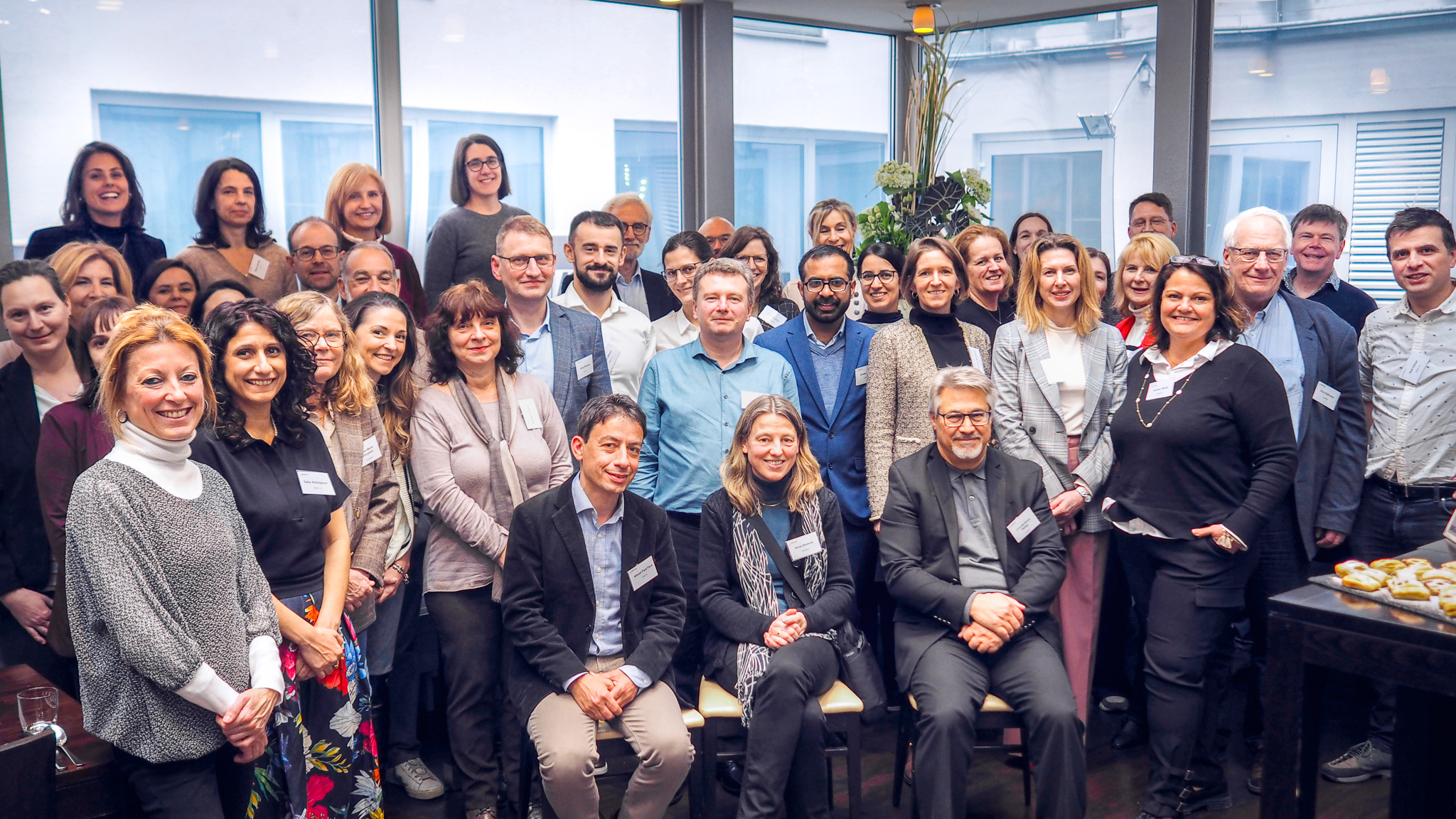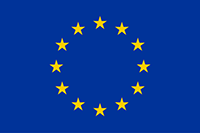I am looking for information as
Researcher

Industry

Patient

EvolveBBMRI: One year of implementation on datafication, greening biobanks, and One Health integration
This article is 1,429 words, an approximate 7-minute read
Since its creation, the Biobanking and BioMolecular resources Research Infrastructure – European Research Infrastructure Consortium (BBMRI-ERIC) has made a remarkable contribution to European and international cutting-edge research, standing as one of the largest research infrastructures for health research and life sciences in Europe.
Now, one year into BBMRI-ERIC’s EC-supported accelerated evolution, what changes are the biobanking community shaping and benefiting from?
The EvolveBBMRI project, coordinated by BBMRI-ERIC in partnership with ten member states, aims to enhance BBMRI-ERIC’s development across its communities in the Member States. The goal is to better support its scientific communities and users, boost its capacity to address EU policy priorities, and strengthen its collaboration with industry.
The project was officially launched at a kick-off event in Vienna, Austria, on 30 January 2024. Now, with the first year completed, it is an opportune time to review the progress made so far.
WP1 – Acceleration of datafication of biobanks and biomolecular resources to enable reproducible advanced medical research
WP1 is led by BBMRI.de/German Biobank Node (GBN) with contributions from BBMRI-ERIC, BBMRI.at, BBMRI.cy, BBMRI.cz, BBMRI.it, and involves all other National Nodes.
WP1 successfully wrapped up Deliverable D1.1 (Concept for datafication of Biobanks) and Milestone MS1 (First data shared in the common secure cloud environment). These achievements mark a significant step toward the datafication of biobanks.
D1.1 introduces a comprehensive framework for integrating clinical, phenotypical, and sample-derived data, enhancing the accessibility and interoperability of biobank resources for research. It also incorporates advanced cryptographic solutions to ensure secure data storage and processing in cloud infrastructures.
Meanwhile, MS1 has successfully deployed encryption technology across multiple national nodes, creating a secure cloud environment for biobanking-related services for a pilot phase. The performance and scalability of this infrastructure will be tested in real-world applications.
In addition to these technical advancements, two key webinars were conducted to engage, educate, and develop IT expertise in the BBMRI community:
- Data Quality Webinar (May 30th, 2024): This online session featured five expert presentations highlighting the importance of data quality for data and technology experts, quality managers, and biobank professionals within the BBMRI community.
- BBMRI on FHIR Webinar (December 3rd, 2024): This webinar focused on interoperability and data standards, featuring two expert presentations.
Furthermore, a call for expressions of interest was announced to onboard biobanks into the BBMRI-ERIC Federated Platform. This initiative will enhance the availability and quality of biomolecular resources for the research community.
WP2 – Teaming with industry towards greener biobanking
WP2 is led by BBMRI-ERIC with contributions from BBMRI.at and BBMRI.cy.
Task 2.1: Mapping gaps and challenges in implementing and maintaining green biobanking practices
Work Package 2 engaged the BBMRI-ERIC National Nodes and associated biobanks in a mapping exercise to assess and identify gaps and challenges in implementing and maintaining environmentally friendly biobanking practices. During the first 12 months, WP2 also organised two workshops on Green Biobanking:
- EBW24 (May 2024): Greening in Biobanking workshop was carried out in cooperation with biotechnology industry partners, (LiCONiC INSTRUMENTS, HAMILTON, ASKION and LVL technologies) and biobanks (BBMRI.NL & BBMRI.CY)
- Nordic Conference on Future Health (September 2024): How to make biobanks greener workshop was organised in cooperation with Industry partners (Hamilton and LVL Technologies) and biobanks (BBMRI.NO & BBMRI.DK)
Milestone 2.1 – Network of biotechnology industry partners (M6) and Deliverable 2.1 – Green biobanking Mapping: Mapping gaps and challenges in implementing and maintaining green biobanking practices (M12) have been submitted.
Task 2.3: Low-energy computing “green computing” as innovative biobanking infrastructure component
WP2 organised two webinars in collaboration with FragmentiX Storage Solutions GmbH. During the webinars, hardware and software platform Groq for better computer performance at lower energy consumption was presented to our community.
WP3 – Long-term sustainability measures for BBMRI addressing also RI landscape gaps
WP3 is led by BBMRI-ERIC with contributions from BBMRI.gr, BBMRI.it, BBMRI.de (German Biobank Node, GBN), BBMRI.cy. Work Package 3 focuses on the long-term sustainability measures for BBMRI, including the expansion of BBMRI-ERIC, its strategic outlook and global engagement. Significant progress has been achieved across all tasks:
Task 3.1: Towards a “One Health” Vision in Biobanking
The 10-Year Roadmap for BBMRI-ERIC was successfully developed and approved, achieving the deliverable ahead of schedule. The final document was officially launched in Brussels during October 2024 at a successful, high-level policy event. Additionally, the next 3-Year Work Programme has been adopted, setting clear priorities, derived in large part from the Roadmap, for the near term.
Task 3.3: Expansion of Membership Across Remaining EU Countries
Significant outreach has taken place, including:
- Participation in Ireland’s 3rd Annual Biobanking Symposium, fostering local community engagement.
- Representation at a conference at the Pathology Institute of Medical University of Zagreb, promoting regional collaboration.
WP4 – Strengthened approach to training and outreach activities to maximise impact
WP4 is led by BBMRI-ERIC with contributions from BBMRI.cy, BBMRI.it, BBMRI.de/German Biobank Node (GBN), BBMRI.es, BBMRI.it.
Task 4.1: Conceptualisation of a training/career curriculum for RI staff in the field of biobanking and biomedical research
A survey has been developed and disseminated in the BBMRI-ERIC community with the aim to provide an overview of existing training programmes, their contents, and target groups.
In parallel, the Version 1.0 of the Competence matrix for RI staff has been created following an analysis of existing research competency frameworks and input from all task contributors.
Task 4.2: Establishing BBMRI-ERIC as a complementary non-university educational organisation, branding the BBMRI-ERIC Academy
The BBMRI-ERIC Academy framework was developed and integrated as a transparent structure in BBMRI-ERIC with the aim to act as a complementary non-university educational organisation following ISO 21001 criteria: Management systems for educational organisations.
Task 4.3: Showcase the value of BBMRI-ERIC to engage new stakeholders and users
A Plan for Communication, Dissemination, and Outreach (PCDO) was delivered in June 2024 and transformed into a model template, now available through the BBMRI-ERIC Taskforce 9 (TF9) on Communication and Outreach. Key project highlights – such as the 10-year roadmap launch and participation in the Irish Biobanking Symposium – have been shared via BBMRI-ERIC channels.
WP5 – Project coordination and management
WP5 is led by BBMRI-ERIC and focuses on the project coordination and management. Since the project’s kick-off in January 2024, bimonthly Project Management Team meetings have been conducted with Work Package leaders to monitor progress and ensure the timely achievement of milestones and deliverables. Furthermore, the Data Management Plan (Deliverable 5.1) has been submitted.
WP6 – Ethics requirements
WP6 covers the activities of the external ethics advisor who has been appointed at the project’s start.
To learn more about the project’s structure and the progress made in the first six months, click here.






